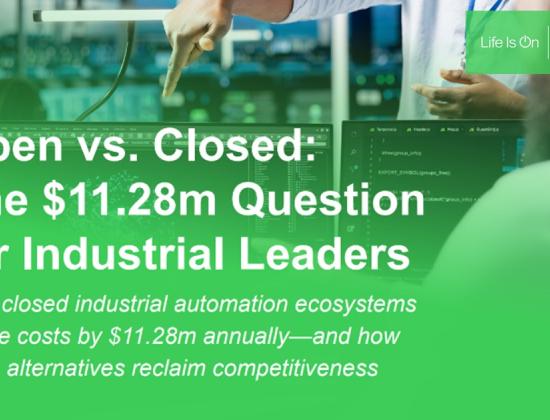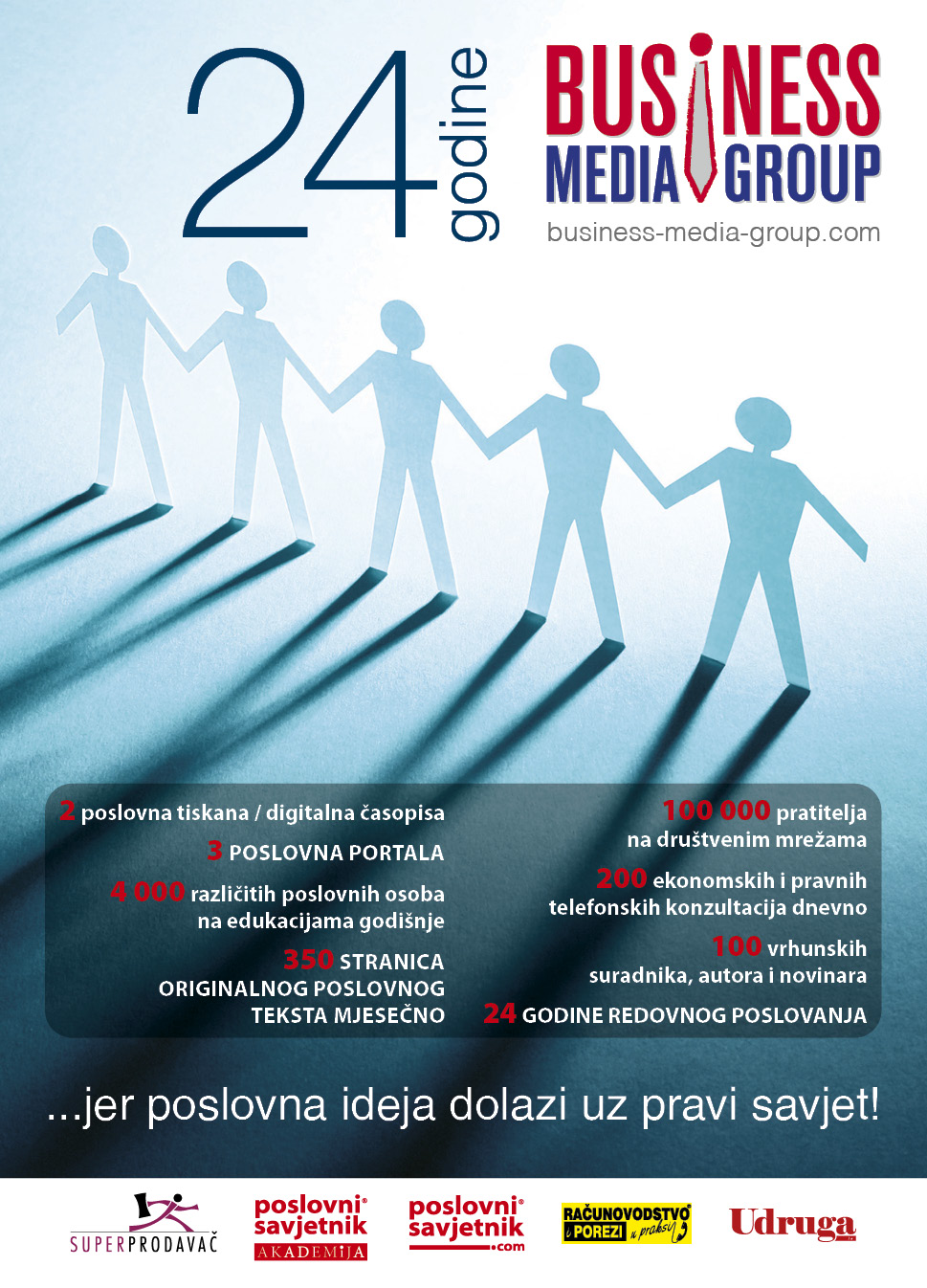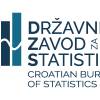John Lodder: CEE CEOs’ and Global CEOs’ Opinions Compared plus 2 Reinvention Tools

In my March column I provide a summary of the recent 26th Global CEO survey by Price Waterhouse Coopers focused on results of the CEE region and compared with global results. I provide links to the full Global CEO Survey and the CEE CEO survey. The most important conclusion is the need of nearly 60% of Leaders to take decisive action to reinvent their businesses for the future; the need has never been this strong. I close with two Reinvention tools that you can use for a practical and effective start-up of your reinvention process. I hope this column will inspire you to take adequate actions.
CHAOS
Many people and managers experience the last few years and our current time as Chaotic.
So many things are happening; adjusting after the global Pandemic, the Russian Invasion of Ukraine with global economic consequences, mass firings in the Tech sector, another 9,000 firings in Amazon, a collapse of two Banks in the USA followed by an thought ‘unsinkable’ Swiss Bank, Leaders have to cope with the shortage of people and talent and so on. It leaves globally ca. 80% of employees and 60% of managers not engaged in their job and 11% of people with a burn-out.
This is why so many people experience CHAOS. However, here are three possible ways to look at this feeling:
1.The need for organizations to change their Business Plan / Strategy goes parallel with the Life Cycle of the Organization. Life Cycles of organizations went down from an average of 38 years in the 1960’s to an average of 3 years in the 2020’s. But most organizations still work with systems, models, management styles and approaches that are based on longer lifecycles that don’t exist anymore in today’s VUCA world. (Volatility, Uncertainty, Complexity, Ambiguity)
2.Chaos is not an absence of order; Chaos is just more than one order.
The world is changing fast and disruption is all around. Does that feel like a threat?
Why not use chaos and the threat as a competitive advantage, instead? How can we turn a crisis into a resource?
I believe that to conquer chaos and fear, you must first understand what it is.
And my take on this difficult issue is: chaos is not an absence of order.
It's a presence of more than one order.
And you have to play in each order differently, according to different rules.
And that requires flexibility, creativity and collaboration to make ‘reinvention’ one’s most important mindset.
1.We must realize and accept that Change is the New Normal! Fortunately we already see that in the cultural behavior of new generations like Millennials and certainly in Generation Z. These generations have other demands and organizations that are already adjusting their leadership style and culture are profiting.
Summary of the CEO Survey for CEE countries
Forty percent of global CEOs think their organization will no longer be economically viable in ten years’ time, if it continues on its current course. That stark data point underscores a dual imperative facing 4,410 CEOs from 105 countries and territories who responded to PwC’s 26th Annual CEO Survey.
Most of those CEOs feel it’s critically important for them to reinvent their businesses for the future.
They also face daunting near-term challenges, starting with the global economy, which nearly 75% believe will show a declining growth during the year ahead.
PwC organized this year’s survey into nine tough questions that fall into three groups about what it takes to operate in our dual-imperative world.
The war in Ukraine has put the global spotlight on Central and Eastern Europe. From Germany’s eastern border to the frontier of China, CEOs throughout the region are dealing with the fallout from this conflict, which is also driving uncertainty around the world.
CEE executives must seize this opportunity to transform their organizations, meeting challenges including geopolitical threats, rampant inflation and economic instability.
Like their peers elsewhere, CEOs in the CEE region are pessimistic about the prospects for the global economy.
Similarly, they’re bearish on the outlook for their own national economies. The good news? Executives are more optimistic about their companies’ own prospects. They see the need for change – and they’re also thinking about the steps they need to get there.
This is an optimistic sign that executives are finding ways to leverage the current crisis for their companies’ long-term benefit. As leaders seek to transform their organizations, we believe the data in this survey can be a powerful tool for them, highlighting priority areas for change and helping them chart a course of action.
CEOs are justifiably pessimistic about global economic growth in the year ahead
The biggest near-term challenge facing CEOs in Central and Eastern Europe is the state of the global and regional economy. Nearly three-quarters of CEOs in the region, and 73% globally, project that global economic growth will slow over the next 12 months.
These expectations represent a sharp reversal from last year, when 68% in the region and 77% around the world foresaw an improvement. Last year’s optimism, driven by the waning of the global pandemic, was dashed in 2022 by shocks such as Russia’s Invasion of Ukraine, surging energy and commodity prices, and accelerating general wage and price inflation.
CEE executives are slightly less pessimistic about their own country or territory's economy: 65% believe growth will slow
This is so even though their economies have been more directly affected by Russia's invasion of Ukraine, due to their higher dependency on Russian gas and the influx of millions of refugees.
Russia's invasion of Ukraine has added additional geopolitical risks to the numerous existing threats to business.
I am convinced, while at the same time hoping for a major de-escalation of the conflict of course, that our region will become even stronger thanks to growing exports and will also become an important center of the nearshoring phenomenon worldwide.
I also know that if organizations are to remain viable in the near and long-term, they must invest in their people and technological transformation agendas to empower their workforces.
Leaders need to empower and engage their people like never before if they are to withstand the pressures of today’s economic environment and long-term disruptors. (Adam Krasoń, CEO, PwC CEE)
CEOs in our region are more confident in their own company’s growth
Despite their gloom about macro conditions, CEOs are quite confident when it comes to things they can directly control: they are more bullish than the global average on their own company’s revenue growth prospects over the next 12 months, with 46% saying they’re “extremely confident” versus 42% globally.
Their optimism is even greater when looking at a three-year horizon, with 50% in CEE and 53% globally saying they’re confident in their company's growth as shown in figure 1.
Figure 1: Optimism in looking 3 years ahead.
When it comes to seeking expansion opportunities abroad, not surprisingly CEE leaders are looking closer to home than before. In this year’s survey, Germany remains the top focus for growth for CEE CEOs.
Within the region, business leaders indicated an increased focus on Ukraine (8%), Serbia (6%), Hungary (5%), the Czech Republic (5%), Albania (5%) and Bosnia and Herzegovina (4%).
The geographical priorities of executives in our region also reflect the continued effect of Brexit on companies in EU member states. Italy and France are now in a tie for fourth place, identified as a priority by 9% of executives, and the UK has slipped to seventh place, with 7%.
Key threats: Inflation is the top concern in the next 12 months, with geopolitical conflict the biggest worry over the next five years
The threat perception among CEOs in CEE is aligned with that of their global counterparts. While the danger from the war, captured in the category of geopolitical conflict, is certainly real, it is overshadowed by the threat from inflation; macroeconomic volatility rounds out the top three.
All of these are immediate issues that can reinforce and compound each other, for example, as the war in Ukraine pushes up prices, this encourages central banks worldwide to intervene through growth-damping interest rate hikes.
Taking action:
In CEE, CEOs are raising prices and cutting costs - but most don’t plan to reduce workforce
In response to near-term economic challenges, CEOs in the region are in line with global peers in taking actions to spur revenue growth and cut costs.
One action stands out: 58% of CEOs in our region say they’ve already begun implementing price increases, a tool that so far just 51% of their global peers have reached for. This is understandable when we look at the region’s rates of price growth compared to Western Europe.
According to the Eurostat data published in December 2022, the lowest annual rates were registered in Spain (6.7%), France (7.1%) and Malta (7.2%). And the highest rates were recorded in Hungary (23.1%), Latvia (21.7%), Estonia and Lithuania (both 21.4%).
More executives in CEE feel they simply have to begin to pass on their increased costs to their customers.
Both in CEE and globally, the shock of the Great Resignation and the ongoing need to attract and retain talent are shaping the response to macroeconomic challenges. Although 51% of leaders say they have already begun cutting operational costs and 21% have slowed investments, just 18% are implementing hiring freezes, only 12% are reducing the size of their workforce and 9% are reducing compensation.
CEOs in our region have a huge role to play, alongside policymakers and other leaders, in responding to the geopolitical challenges from the war in Ukraine. Their decisions today will shape the future for decades to come, so it is encouraging to see their heightened engagement and determination to seize opportunities for transformation in response to the crisis.
In recent years we’ve noted a ‘wait and see approach’, where regional executives were more hesitant than their global peers to push for sweeping change. Today, CEOs in CEE share a growing conviction that the time to act is now.”
(Agnieszka Gajewska, PwC Global Government & Public Services Leader, CEE Clients & Markets Leader)
Global and CEE CEOs have a keen awareness of the potential for disruption ahead: 45% in our region and nearly 40% globally, don’t think their companies will be economically viable a decade from now if they continue on their current path. Business leaders are conscious that threats they face are existential and they taking action accordingly.
Figure 2 - Question: If your company continues running on its current path, for how long do you think your business will be economically viable?
Figure 2: How long will your business be viable without reinvention?
CEE’s continuing war for talent: Labor and skills shortages seen as top long-term challenge to profitability
Chief among threats to their businesses, for leaders in our region, are potential shortages of labor and skills – part of the ongoing global war for talent that has been evident in CEO surveys for several years now.
Asked about the forces most likely to impact their industry’s profitability over the next 10 years:
- 64% of regional CEOs cited skills shortages as impacting them “to a large/very large extent”, well above the 52% global rate
- Other threats include changing customer preferences (CEE: 52%, global: 56%), and
- Technology disruption e.g. advanced tech, AI, the metaverse, blockchain (CEE: 47%, global: 49%).
Figure 3 - Question: To what extent do you believe the following will impact (i.e., either increase or decrease) profitability in your industry over the next ten years?
Figure 3
To respond effectively to these challenges, CEOs are building resilience today. Technology- and Reinvention-oriented investments loom large for many global and CEE CEOs. In our region, business leaders are planning to invest more in automation, deploy technologies (cloud, AI, etc.), and upskill their workforce in the next 12 months.
CEOs in our region may need to further increase cyber investments in response to geopolitical conflict
The digital transformation of the global economy has changed cybersecurity. The COVID-19 pandemic forced many companies to shift to remote work and online sales, which propelled the adoption of new tools and technologies.
As a result, digital transformation shifted from a long-term agenda item to the most urgent one. Yet leaders have to bear in mind that it’s easy for important business technology investments to inadvertently create cyber vulnerabilities.
While the survey shows that cyber risks are not a top priority for chief executives in the next 12 months, the picture changes for their five-year outlook. Over that timeframe, cyber risks join inflation, macroeconomic volatility, and geopolitical conflict in the top tier of risk exposure. This suggests that there is a clear first-mover advantage for leaders who are able to prioritize investments in cybersecurity today, stealing a march on their competitors.
Managing climate risks is a growing priority for businesses – both globally and in CEE
CEOs both in our region and globally expect some degree of impact from climate change in the next 12 months -primarily in their cost profiles, where 46% expect a moderate, large, or very large impact, followed by supply chains (43%). Fewer are worried about climate-related damage to their physical assets (17%).
Moving at the right pace and with the right priorities to mitigate climate risks, generate opportunities and decarbonize is an enormous strategic challenge. Many companies appear to be strategizing today without the information provided by an internal pricing mechanism for carbon, even though this could help them account for considerations such as taxes and incentives, and clarify strategic tradeoffs.
An important question then is whether leaders in our region are correct in moving more slowly than their global peers to address climate challenges.
Energy independence is a growing priority for leaders in our region
Russia’s invasion of Ukraine was a wake-up call for many CEE countries, which were heavily dependent on Russian gas. In this year’s survey, 48% of CEOs in CEE said that the transition to new energy sources will impact their business in the next 10 years, substantially more than the 37% of global leaders who foresee this effect.
And 46% of business leaders in CEE (globally: 34%) plan to invest in alternative new energy sources in the next 12 months. This is an encouraging sign which will also beef up their ability to respond to climate-related challenges.
CEOs want to spend less time on operations, more time on reinventing their business
We asked CEOs how they divide their time among a range of priorities.
Current operating performance consumed the biggest share of CEOs’ time, see Figure 4.
If they could redesign their schedules, they told us, they would spend more time evolving the business and its strategy to meet future demands, as shown in Figure 5. This highlights how business transformation is important not only for companies to survive after the next 10 years, but also for reimagining the role of the CEO: creating organizations whose top leaders are freed up from day-to-day challenges.
Question: During your work time, on average, what percentage of time do you spend on each of the following?
Figure 4
Question: Knowing what you know now, if you could start over with a blank calendar, how would you allocate your time as CEO?
Figure 5
CEO’s need to empower their people to deliver on today’s business – to free up CEO’s time to focus on the future
Engaged, empowered organizations move faster, innovate more readily, and collaborate more effectively to get things done. For CEOs hoping to enjoy such benefits, this year’s survey suggests some warning signs, as well as areas of opportunity.
As many as 43% of CEE CEOs said leaders in their organization do not often encourage debate and dissent, while 57% said their leaders did not often tolerate small-scale failures. And 75% said their leaders do not often make independent strategic decisions for their function or division as shown in Figure 6.
Question: For each of the statements below, please indicate how frequently these occur in your company
The diversity and complexity of today’s business challenges place a premium on the ability to collaborate across the boundaries of the corporation.
To get a window on these dynamics, we asked CEOs how they forge partnerships - with whom and to what objective. The results show that companies work with a wide network of collaborators, and that those relationships are most often struck to create new sources of value. Addressing societal issues such as education and sustainable development was more often a goal of collaboration with non-business entities like NGOs.
Figure 7 Question: To what extent is your company collaborating with the following groups to create new sources of value?
Figure 7: Collaborating to create new sources of value.
Looking ahead: Redefining the leadership agenda for CEE
This is the 26th year of engaging business leaders around the world on their confidence level, their main priorities and the actions they are taking for the year ahead. Never has this exercise been more crucial to the future of our region. We believe that the leadership agenda of CEOs will go a long way towards mapping a path for the region overall.
Decades-high inflation, supply chain disruption, and geopolitical conflict have contributed to a level of CEO pessimism not seen in over a decade.
But there is an opportunity in every crisis.
And the need to take decisive action by the leaders and to reinvent their businesses for the future has never been as strong as today - 45% in our region don’t think their companies will be economically viable a decade from now if they continue on their current path. The data we presented show that CEOs are balancing how to maintain focus on both long-term and short-term challenges. They might be now focused more on current concerns: inflation, geopolitical turmoil and the economic downturn.
But looking after employees and upskilling them is an even more pressing need than ever before.
Labor and skills shortages are seen as top long-term challenges to profitability in the CEE region.
CEOs here and around the world also noted the need to collaborate with a wide range of stakeholders to build trust and deliver sustained outcomes if they are to generate long-term societal value.
The decisions that CEOs make in these moments will shape the development of their organizations and of the region’s economies and society as a whole for the next decade or more.
We are hopeful that our research will help leaders identify vulnerabilities and focus on their biggest opportunities, leading to broad, long-lasting positive change.
Links to read or download the PwC Report
The link to the Global CEO Survey is: https://www.pwc.com/gx/en/issues/c-suite-insights/ceo-survey-2023.html
The link to the CEE CEO Survey is: https://www.pwc.com/c1/en/26th-ceo-survey-cee.html
REINVENTION
To survive organizations are forced to anticipate faster as ever to developments in their different markets (e.g. employees, core business, customers, competitors, suppliers, sustainability, National laws etc.) and to take action.
We call this action to survive ‘reinvention’.
New in our VUCA world is the constant increasing higher speed of change that threatens the lifecycle of organizations.
For ca. 200 years, until the 1960’s the average lifetime of a company’s strategic plan or business model was 75 years and it had to reorganize or change ‘something(s)’ every 37½ years as an average. That means that someone who started to work in a company usually left the company when the pension date arrived. Of course there were some reorganizations and changes but it was easy to handle for everybody. We were living for 200 years in a culture of long, calm and easy going cycles.
This year’s research shows in more detail that, depending on their sector, 16% of companies have to reinvent themselves every year, 44% every 2½ years, 28% every 4-5 years and 12% every 6-10 years.
The American Enterprise Institute states that 88% of Fortune 500 companies are gone in the last 60 years. Innosight predicts that 50% of S&P companies will be gone in the next 10 years.
BCG stated that of today’s industry leaders / CEO’s who are holding that position for at least 5 years went down from 77% to 44%.
Through the last 20 years research shows that 75% of change projects and transformations fail, mainly because we are still working based on these ‘long cycle mindsets, cultures and experiences’.
The good thing is that in the 26th PwC CEO Survey now ca. 60% of global CEO’s understand that they have to embrace reinvention to survive with their business as shown in Figure 8.
Figure 8: Reinvention is necessary.
Founded by Prof. Dr. Nadya Zhexembayeva ‘The Reinvention Academy’ offers reinvention programs with tangible impact, quick return on investment, and immediate applicability for a.o. managers, leaders, entrepreneurs, consultant’s, project leaders etc. These programs are based on scientific and in practice tested reinvention tools. Participants come literally from around the globe, including many CEE participants.
As promised I provide you with 2 tools out of this programs.
1 – ‘Kill your own company’ to beat your competition
The idea is very simple but it’s always surprising to me how focused, energizing and effective this simple exercise works in practice:
1.Get a diverse group of thinkers together.
2.Brainstorm all the different ways your organization could be destroyed.
3.Review all generated risks and come up with ways to address them before they come calling.
In detail
Business is much about problem solving.
Imagine one of your most threatening competitor wants to kill your company, how would they do this?
- How do you reinvent even when you feel lost?
- How do you break out of the ‘in the box’ mindset to see things differently?
- Is your organization falling victim to the arrogance of the Titanic Syndrome?
Forget the old fashioned, out-of-date SWOT-analysis!!
Bring your management team together to do a simple and effective ‘kill our company’ exercise.
Business is much about problem solving. Albert Einstein said ‘’A well-defined problem is already for 90% solved.’’
Effective problem solvers are able to look at issues from several perspectives. One of the most effective ways to do this is to get out of your own ‘head space’ and see things from the viewpoint of your competitor.
Lisa Bodell wrote a book in 2012 called ‘Kill the Company’ and she said the biggest risk is not having a poorly performing company. It’s being too comfortable with the day-to-day status quo.
What worked in the past and what works today might not be effective tomorrow or in the – very near - future.
Your most threatening Competitor
Imagine you are the CEO of your most aggressive competitor who would like to see you out of the market.
In other words (s)he wants to kill your company. If you were in their shoes, what would they do?
How would they annihilate your products and services?
Take 1 hour with your managers and staff and ask them what would they do?
Brainstorm, go a bit crazy, and come up with (un)conventional responses and the wacky ideas.
Nothing should be excluded. Put everything down on index cards or sticky notes.
Take a few minutes to cluster the threats by theme, put them up on a wall where everyone can see them.
Have an open discussion on what you together have discovered. Now sort them by small, medium and large threats.
Then sort by possibly fast implementable and for middle or longer term implementable.
Which threats are the most real for you and your team?
Be practical: it’s impossible to respond to everything your team comes up with.
Pick the top three threats and draw an action plan on how your organization can best respond.
This approach works as well for products and services, and can also be applied in the public sector or among NGO’s.
Somehow we have to have the agility to pivot (to change direction) and always have a Plan B.
Ask critical, penetrating questions that make your management team uncomfortable.
2 – The Titanic Syndrome
A Change Process always consists out of 3 pillars: Anticipating Change, Designing Change and Implementing Change.
These 3 pillars require different skills and many people / organizations are not good in all three of them.
This is one of the main reasons why 75% of Change Projects fail. Understanding the 3 pillars of reinvention:
1.Anticipating change
Look around corners, spotting icebergs (risks, threats, challenges) more than in a meeting. Make it your superpower. One simple way to do this is to multiply and diversify the number of sources that you go to for information about trends affecting your environment or industry
2.Designing change
Work with teams to identify what it is that they need to improve, cooperate and co-create or discard to be able to withstand the realities that are synonymous with the profound speed of change and disruption.
3.Implementing change
When you know what needs to change in your business, you'll need to be clear on the inputs required to embed the changes to business models, products, services or processes in the hearts and minds of your team members.
For change interventions to be meaningful and lasting, you, your people and your organization need to be exceptionally good at these 3 pillars of reinvention.
I wrote before about the new volatile and uncertain reality in which our companies and communities operate today, which comes with an accelerated speed of change.
When an organization (or a person) is not able to adapt to the speed and intensity of change it can bring about its own collapse. We call such a disease the “Titanic Syndrome”.
Is your Organization or are you suffering from the Titanic Syndrome?
Answering the 15 questions of this Titanic Syndrome tool shows how skilled you are or how skilled your organization is and what should be improved. Based on the questions you get insight what your priorities to improve are.
So, there are three options to use this tool:
1.You answer the 15 questions to score yourself (download attachment 1A) or
2.Your team and you answer the 15 questions to score your department, (download attachment 1B) or
3.Your team and you answer the 15 questions to score your total organization. (download attachment 1B)
And of course you involve your team to look and exchange each other’s stronger and weaker points and explore together how you can build up yourself and your organizations to become stronger.
I have seen remarkable improvements in organizations working with this tool thus I wish you pleasant and effective teamwork.
For this column I was inspired by, and I like to thank Price Waterhouse Coopers, David Abbott and Dr. Nadya Zhexembajeva.
(ps/sm)




























